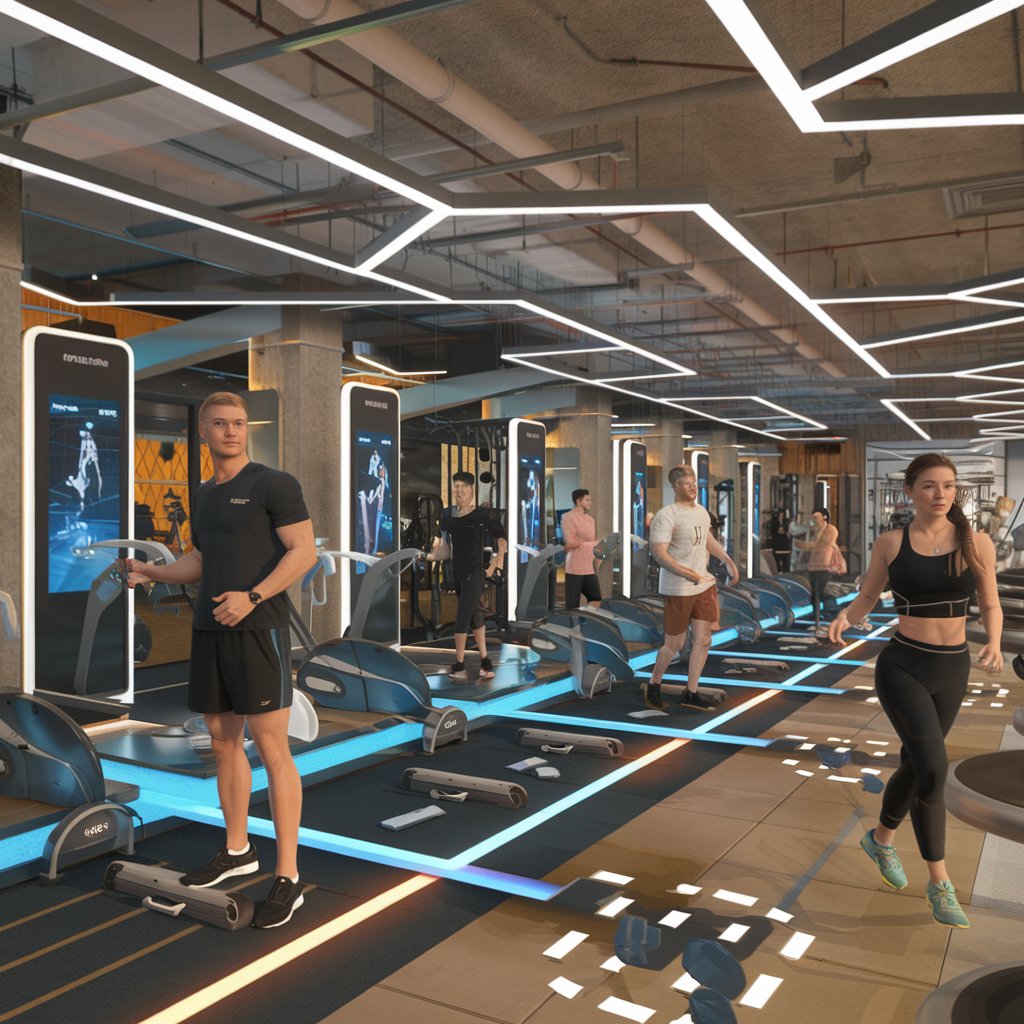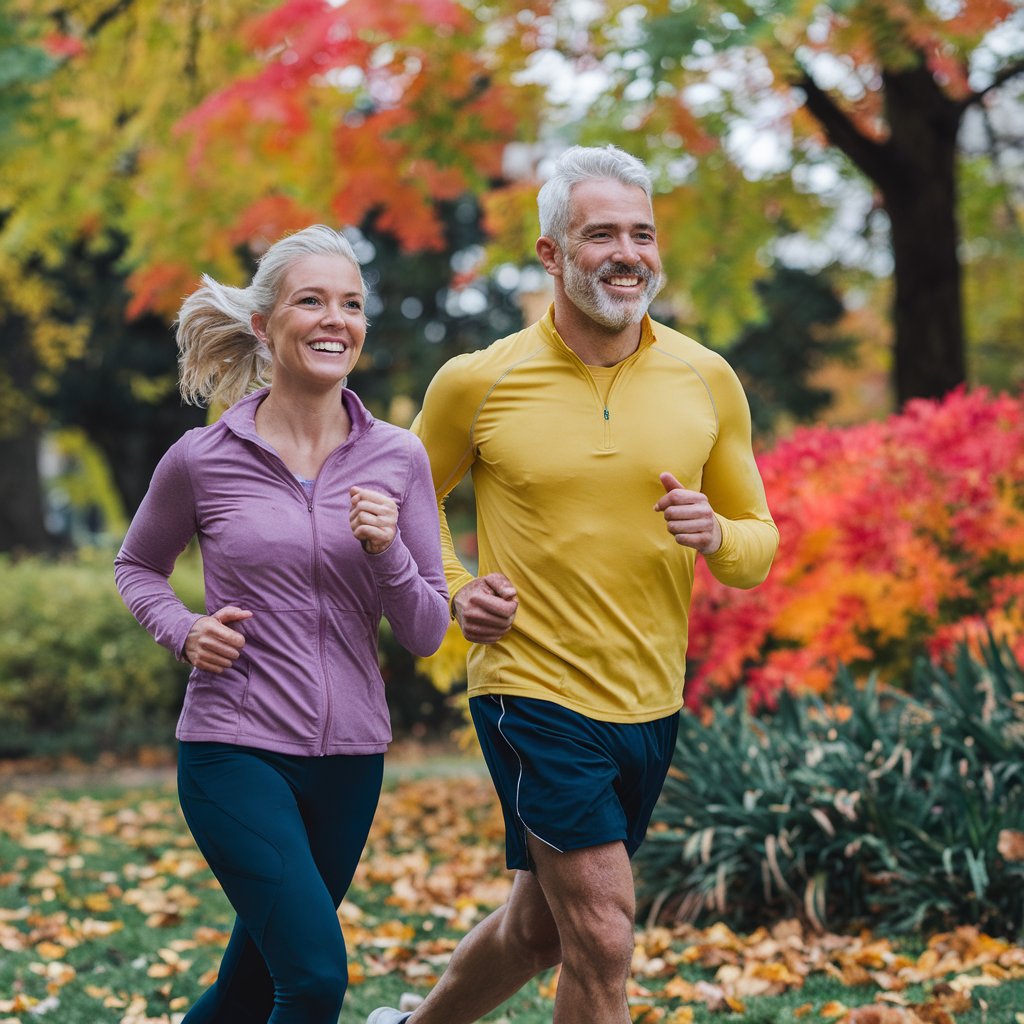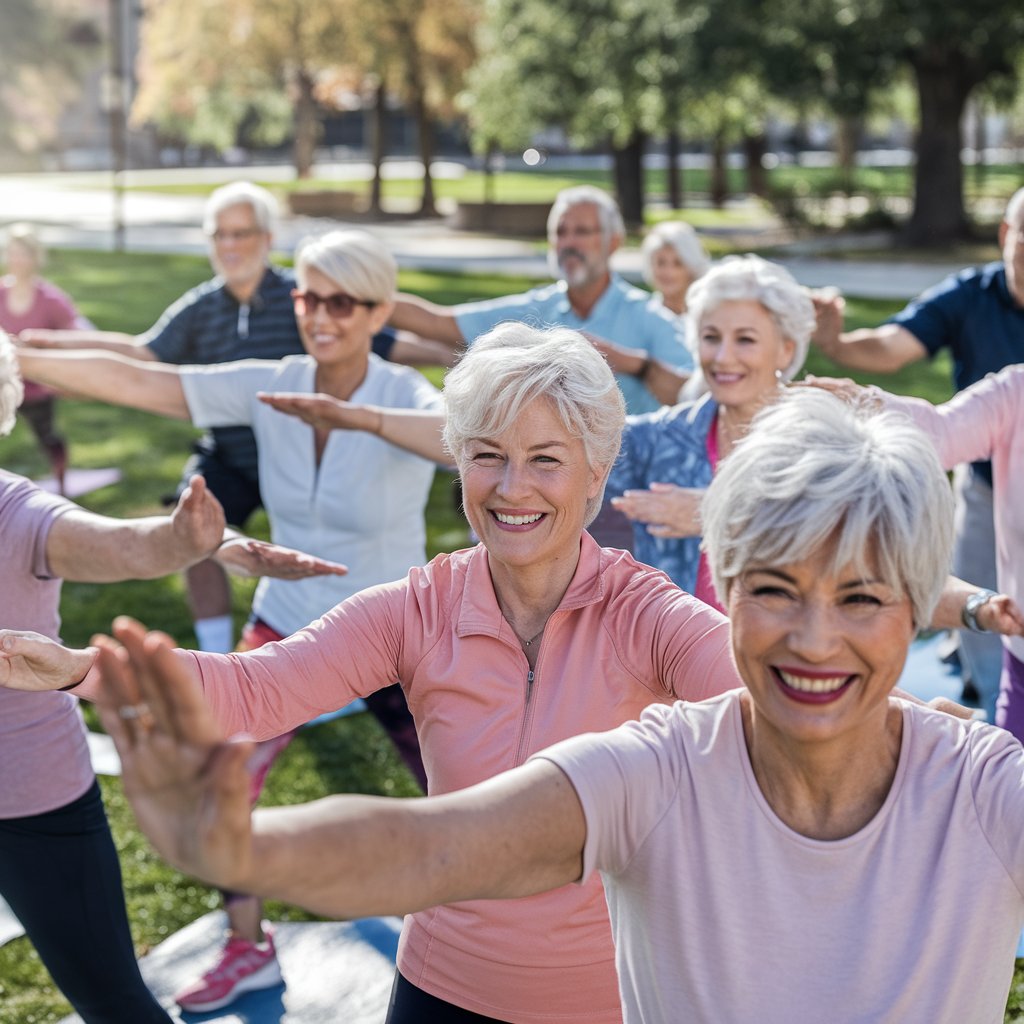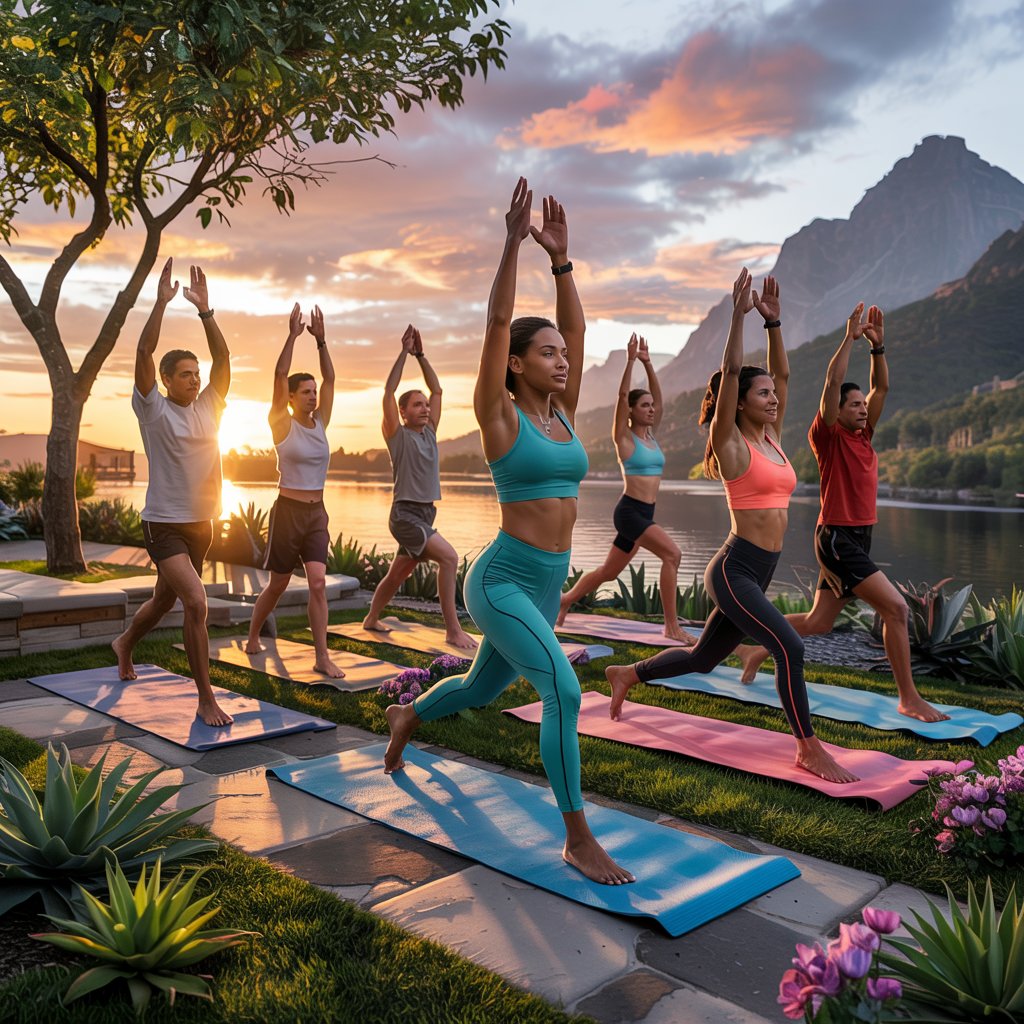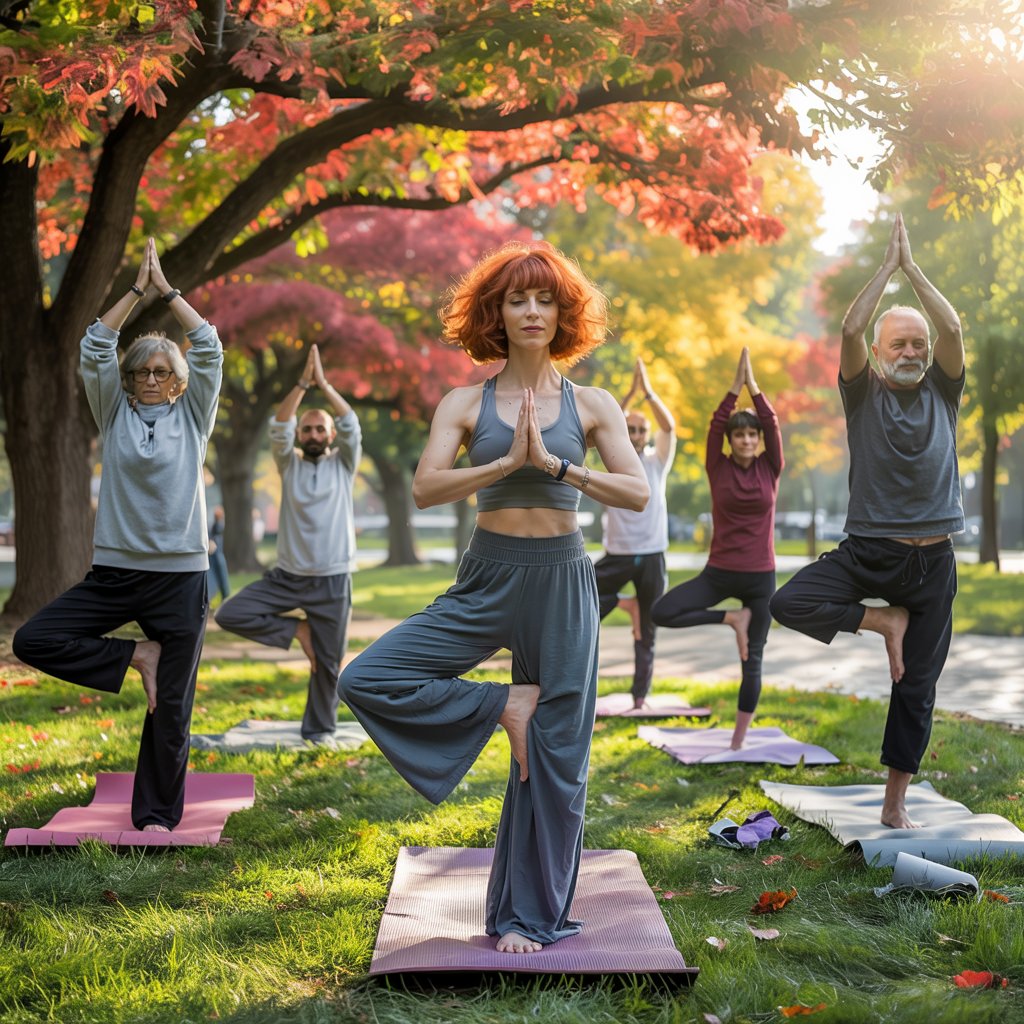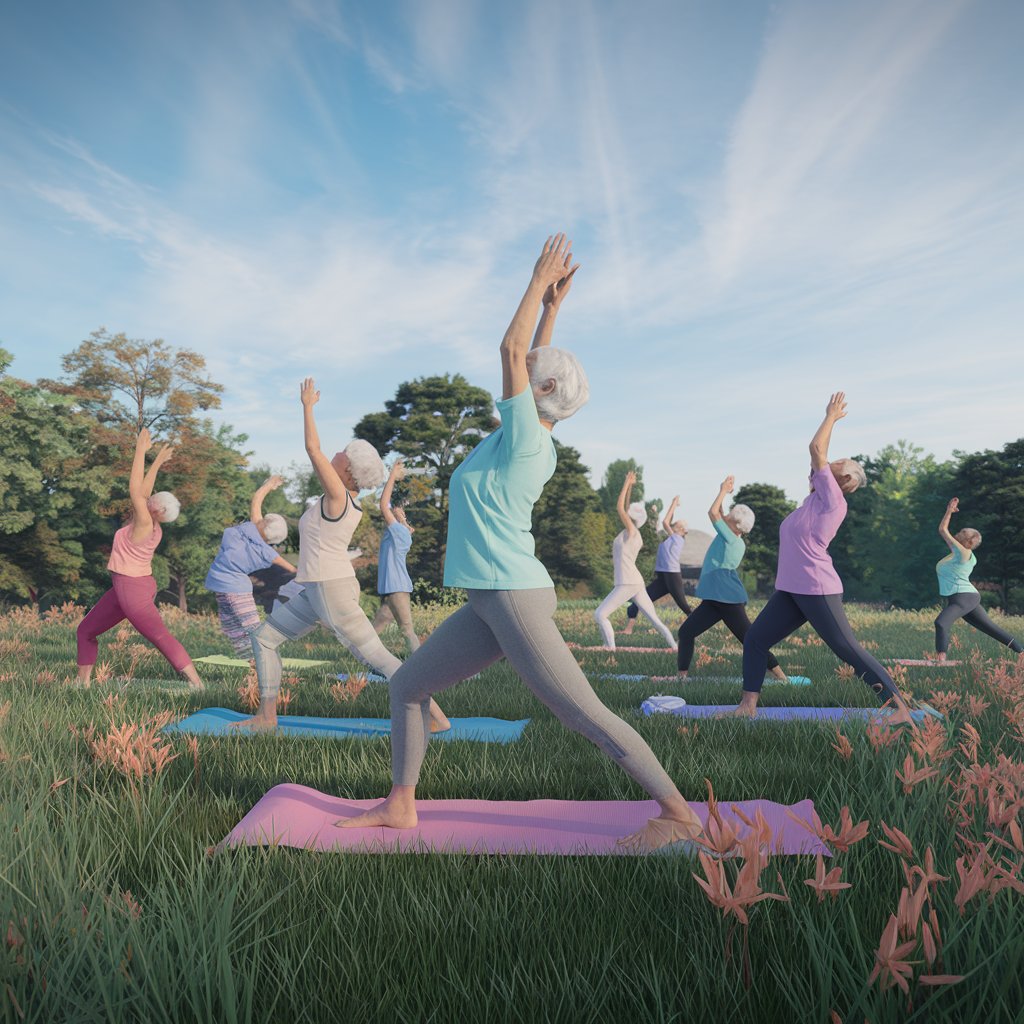
Revitalize Your Flexibility Lifelong Fitness Secrets
The Importance of Flexibility in Aging
Flexibility is absolutely vital for keeping well-being as you hit those later years, yet it’s often overlooked. Staying limber isn’t just about looking good at yoga class; it actually maintains your range of motion, which means better balance and fewer injuries. Our muscles naturally lose a bit of their give-and-take as we age, making everyday things harder. But adding some flexibility exercises into your fitness plan can really help fend off these changes.
Think of keeping flexible not just as a short-term goal but as putting something valuable in your health bank for later years. Being able to bend, reach, and move without a fuss seriously boosts your quality of life. Plus, flexibility isn’t just about the body—it’s linked to mental toughness too. That feeling of achievement when you move with ease can lift your spirits and help your mental health. Having more flexibility even makes your calorie-burning more effective and improves physical performance. Boosting flexibility is all about not just looking good while you age, but feeling vibrant too.
For anyone interested in digging deeper, adding flexibility to your routine isn’t just about stretching your body—it’s mentally liberating. Mix in some core exercises to beef up your overall stability. Fancy more info? Check out our guide on core stability.
Key Exercises for Enhanced Flexibility as You Age
Aging with style involves nourishing your flexibility through exercises that enhance both your looseness and strength. No matter your age, including certain key movements can really give your flexibility a boost. Start with gentle dynamic stretches—great for getting the blood pumping and warming those muscles up. Easy stuff like arm circles or leg swings can significantly help your mobility.
Then dive into some static stretching, where holding a position for 20 to 30 seconds works wonders to stretch out those muscles. Focus on hotspots like your hamstrings, quads, shoulders, and back. Doing this regularly is the trick. Aim for three to four times a week, and always pay attention to what your body is telling you.
Mix in functional exercises for added flexibility while also making daily tasks easier. Moves like squats, lunges, and hinges are great for joint health and promote physical harmony. Toss in core stability workouts, which not only boost your flexibility but keep your balance in check, cutting fall risks significantly.
Pairing these methods with mindful practices hugely enhances their impact, creating a well-rounded strategy for keeping flexible. Keen to master exercises that help with graceful aging? Pop over to our guide on functional exercises for older adults. This whole approach means you’re on the right track for keeping flexible as the years go by.
Mindful Practices to Preserve Flexibility
Incorporating mindfulness into your routine is one of the best ways to boost flexibility over time. It’s not just about bending your body in new ways, but also about supporting your mental game. Mindful stretching means syncing your breath with your moves, which helps you unwind and prevents injuries—key aspects of staying nimble. When you tune in to your breathing and body sensations during stretching, you enhance your mental clarity and ease muscle tension.
Weaving mindful movements into your day is crucial. Activities like Tai Chi and yoga provide gentle stretching and balance exercises that are fantastic for joints and muscle flexibility. These practices build body awareness necessary for safely expanding your range of motion. Stick with it and you’ll notice lasting benefits.
Rather than just treating flexibility as a bodily trait, see it as a whole-life concept that involves your mind and body. Meditation can halt flexibility loss in its tracks. A clear mind means better communication with your body, leading to smoother movements.
Nutrition is a big player in maintaining muscle and joint health, both of which are crucial for flexibility. Want to know more about its role? Visit our page on The Role of Nutrition in Fitness.
Understanding Your Biological Flexibility Age
Flexibility can seem like an elusive goal as years go by, but grasping the concept of biological flexibility age is key. This isn’t about just counting years; it’s about how spry you feel inside. Knowing your flexibility age can reshape your view on getting older and open up new paths for an active life.
Your body’s flexibility age can be vastly different from the number on your birthday cake. It can shift based on choices like how active you are and your dedication to fitness. The give in your joints and muscles might mirror how often you stretch or dive into movement-focused exercises. This holds true whether born with a natural bend or kept up through a routine.
Understanding flexibility on a biological level means knowing its diverse influences. Nutrition, muscle strength, and stress all play roles in maintaining or improving flexibility. Having a balanced diet, enough hydration, and strength training regularly can make you feel younger than the calendar might suggest.
Exploring strategies, like embracing good nutrition for optimal muscle function, draws the line between physical and biological flexibility age. Embrace the idea that your flexibility can mirror the choices you proactively make.
Personalized Health Insights for Maintaining Flexibility
Flexibility isn’t something you nail once and have forever; it’s a moving part of your health that changes over time. Keeping it up as you get older needs personalized approaches suited to your way of life and your body. By getting to know what your body specifically needs, you can shape a flexibility program that adapts with your biological changes. Start by looking at your daily habits, spotting activities that boost stretching and mobility. Work in consistent, gentle exercises that get you moving and make your body more adaptable.
Regularly checking in on your flexibility can offer insights into your muscle symmetry and joint health. Tweak your workout routine to zero in on imbalance or stiffness, making sure you’ve got a well-rounded plan. Think about exercises that not only boost flexibility but also support core stability, helping overall function as the years roll on. Try these out with some core stability exercises crafted just for this.
What you eat plays a big role in keeping those muscles resilient. Foods rich in antioxidants and omega-3 fatty acids are game-changers for your joint health. Keeping yourself hydrated is just as important to maintain muscle suppleness. When you mix physical activity with mindful nutrition, you’re crafting a holistic game plan for keeping flexibility over time.


